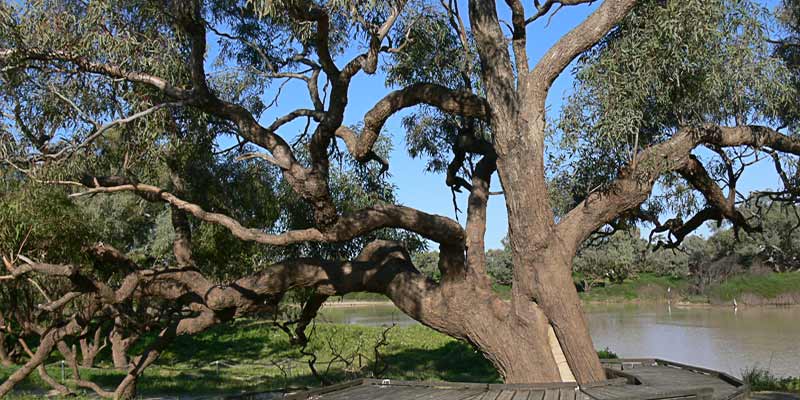Following Explorers Burke and Wills: a Journey Across Australia
Explorers Burke and Wills were well-known for their part in the exploration history of Australia. Their efforts to cross the country from south to north enabled the extension of the current knowledge of vast parts of the inland.
On the Track of Burke and Wills
Many travellers follow the routes of Australia’s intrepid explorers. The Burke and Wills route across the Australian continent provides an interesting, alternative journey. This is a short guide to their trek.
A short history of explorers Burke and Wills expedition
The Exploration Expedition
In 1860, Irishman, Robert O’Hara Burke, was appointed leader of an expedition to explore the area between Melbourne and the Gulf of Carpentaria. Both impulsive and impatient, Burke was a poor choice. He had no experience as a bushman or ability to plan an expedition.
Fortunately, the serious and reserved 26 year-old, William Wills, was chosen as surveyor and navigator. It was due to Wills that the expedition was nearly a success.
The Expedition Journey
The expedition progressed to the Gulf of Carpentaria in three stages. Nineteen men left Melbourne in August 1860 and worked their way to Menindee in New South Wales.
Rainfall was heavy in August 1860 Victoria. With an overabundance of supplies to transport, progress was slow through thick clay and soggy ground. Later the route was across sand dune country. Burke ditched some of the superfluous equipment, but he also left behind useful supplies such as medicines, fishing gear and lime juice used to prevent scurvy.
At Swan Hill, a tiny settlement on the Murray River, Burke discharged four men and took on four others. One of these was Charley Gray, a former sailor and ostler for Cobb and Co, who went to the Gulf with Burke, Wills and John King.
Eventually the expedition reached Menindee on the Darling River. Here Burke sacked his second in command, George Landells, due to their frequent disagreements over the treatment of the camels. William Wills now became deputy. Burke was impatient to be the first to cross the continent from south to north. He divided the party and left Menindee with seven men on 19th October 1860.
The remaining men were to follow with fresh horses and supplies to Cooper Creek. But by the time they left Menindee in late January 1861, conditions were poor and three men died in the attempt.
Burke and Wills explore to the Gulf
Meanwhile Burke and Wills had reached the Cooper in December 1860. Here they built a depot near the 300-year-old coolabah tree that became known as the Dig Tree.
Burke soon set off for the Gulf with Wills, Gray and King. This was through the full summer heat of central Australia and the Top End wet season. Four men remained at Cooper Creek to wait for their return.
Burke and Wills’ journey to the Gulf of Carpentaria passed close to present day Birdsville, Boulia and Cloncurry.
Their final campsite was Camp 119 (CXIX). Leaving Gray and King at this campsite, Burke and Wills made a final effort to reach the sea. Unfortunately, they never reached the sea, but the water they tasted was salty. They returned to Camp 119 to begin the arduous trek back to the Dig Tree.
Gray died on the journey back, while Burke, Wills and King finally reached the Cooper in April. They discovered that the men left there had departed that day, only a few hours before.
After four months the men at the tree couldn’t wait any longer. Their supplies were running short and some were ill. On 21st April 1861 they started their journey back to Menindee. Little did they know that Burke, Wills and King staggered into camp that very afternoon.
Without the energy to continue the three remained at Cooper Creek until Burke and Wills died in June. But King survived. Alfred Howitt’s search party found King in the care of the local aborigines. Howitt buried both Burke and Wills where they were found. Later their bodies were removed and buried in the Melbourne cemetery.
Following the Explorers Route today
Memorials to Explorers Burke and Wills in Melbourne
A statue of the explorers Burke and Wills stands on the corner of Swanston and Collins Streets.
In the Melbourne General Cemetery, a massive granite obelisk marks the grave of Burke and Wills. John King, survivor of the expedition, lies in another part of the cemetery.
In Royal Park an impressive memorial marks the spot where the expedition party began their journey north. There is a commemorative plaque here too, recording 150 years since Burke and Wills departed on their epic journey.
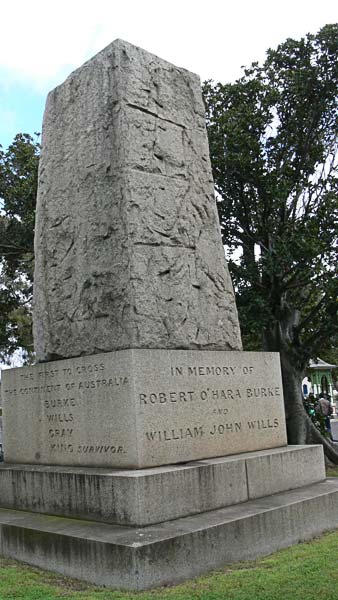
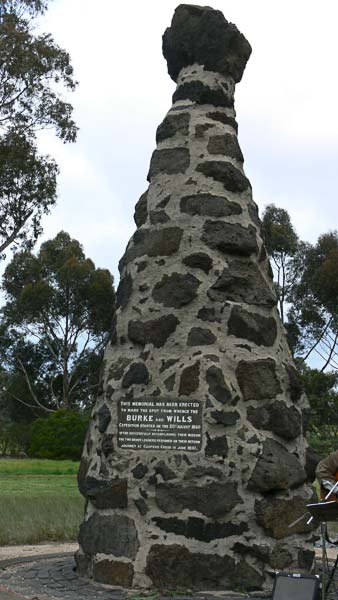
Their first campsite is only four miles away near Queens Park on Mt Alexander Road. A small memorial in the median strip marks this spot.
Melbourne to Swan Hill
From Melbourne the route passes Romsey, Lancefield and the Campaspe River near Bendigo where they camped one night.
For today’s travellers, the Terrick-Terrick National Park offers camping and exploring. The lookout on top of a rocky hill offers views across the wide plains.
Swan Hill is a bustling, modern township located beside the Murray River. The Pioneer Settlement here showcases the lifestyle along the Murray from its 1850s’ beginnings. Visit cottages and shops of the time or enjoy rides and a paddle-steamer cruise.
Swan Hill to Menindee
From Swan Hill cross the Murray River into New South Wales. The route passes Balranald and heads for the Darling River.
Mungo National Park is located in this region. A World Heritage site, Mungo is rich in Aboriginal culture with a history dating back 42,000 years. On a guided tour visit the Walls of China, where erosion has sculpted sand and clay into fragile but imposing formations. A self-drive tour through the stunning landscape includes the history of more modern times when a sheep station was located here.
Pooncarie is a pleasant stopping spot on the Darling River, while Bindara Station offers camping and accommodation.
Kinchega, formerly a sheep station, became a national park in 1967. The park protects the Menindee lake system and highlights its rich pastoral and Aboriginal history. Visit the historic Kinchega Woolshed and Old Kinchega Homestead or take a discovery tour with the Barkindtji Aboriginal Elders. Camping and accommodation are available in the park.
Menindee is another pleasant small township on the banks of the Darling River. The original Maiden’s Hotel played a significant part in the Burke and Wills story.
Dost Mahomet’s grave is located a short distance out of town. Mahomet, an Indian-born cameleer, travelled to Cooper Creek with Burke and Wills, but remained at the Dig Tree during Burke’s dash to the coast. He returned to Menindee and worked in the bakery until his death in 1881.
The scientific explorers camped for three months beside Pamamaroo Creek, near Menindee. Signs indicate the spot where they waited to continue their journey.
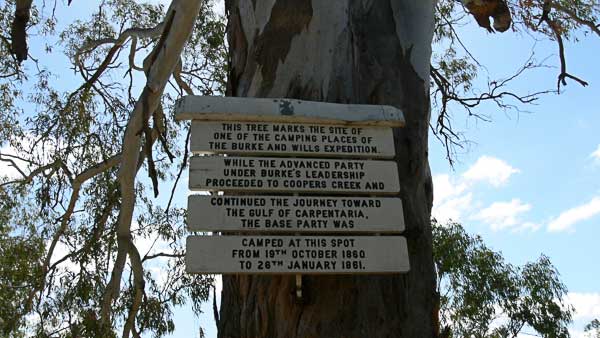
Menindee to the ‘Dig Tree’
Mutawintji National Park is well worth a visit, featuring many walking trails through the rocky terrain. Visit the Mutawintji Gorge, or take a guided Aboriginal heritage tour and see one of the best collections of Aboriginal art featuring both hand stencils and rock peckings.
The route deviates now from that of Burke and Wills as there is no access through the private properties in this area.
From the Silver City Highway, today’s travellers can visit the historical township of Milparinka or head further west to Mt Poole. Charles Sturt spent six months here during his exploration to the centre of Australia.
Tibooburra is the last township in New South Wales. Well-known for its two hotels, Tibooburra was a gold mining town for a short time. But mining became unviable due to the shortage of water.
From Tibooburra, travel north into Queensland, to the corner border area with South Australia.
Noccundra is the only establishment in this area. Take some time here to enjoy the old hotel, built in 1882 before heading to the Dig Tree.
The Dig Tree is a 300-year old coolabah, that stands beside Cooper Creek on Nappa Merrie station.
There are three carvings on the tree although these are grown over now. One of the carvings marked the date of the explorers’ arrival at Cooper Creek and the date of departure – Dec 6-60 over Apr 21-61. Another carving marks the campsite number – B over LXV (65).
The third was the word ‘Dig’. This referred to the spot where the departing group had buried supplies for Burke and Wills in case they returned to the Cooper.
Today’s travellers will find pleasant camping near the Dig Tree as well as at the small township of Innamincka over the border in South Australia. There is good camping along Cooper Creek, but you need a desert parks pass for this.
Innamincka consists mainly of a hotel and a general store selling food and fuel. Other points of interest at Innamincka include the regional reserve information centre based in the historic Elizabeth Symon Nursing Home. The Burke and Wills burial sites are located beside Cooper Creek on either side of Innamincka.
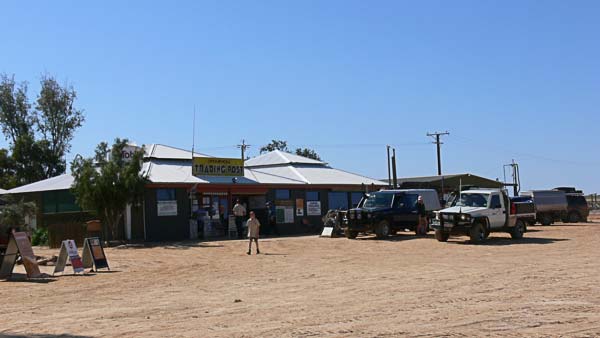
Birdsville and beyond
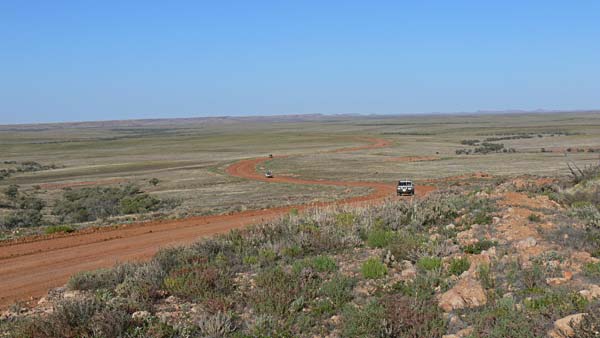
Explorers Burke and Wills travelled along Cooper Creek, before turning north west, roughly in the same area as today’s Walkers Crossing Track across to the Birdsville Track.
Birdsville, perched on the edge of the Simpson Desert, has all facilities for travellers with general store, camp ground, bakery and, best of all, historic pub. Big Red, the largest sand dune of the Simpson Desert is a short drive from town.
From Birdsville, head north along the Eyre Development Road through Bedourie, the first small town. Then comes Boulia, home of the Min Min light and a fascinating exhibition at the Min Min Encounter. The Min Min light is often sighted but cannot be explained. There is also a fossil museum here.
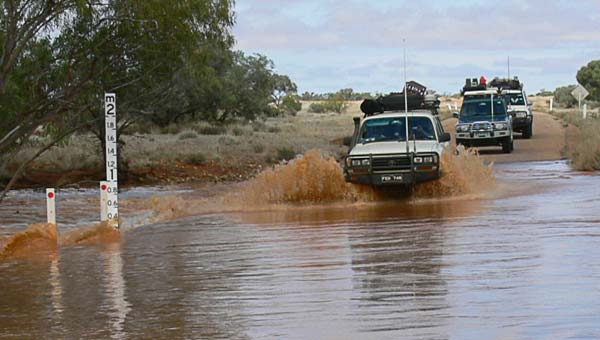
There are several references to Burke and Wills through this region. Boulia is on the Burke River, Wills Creek is also present. North of Cloncurry, the Burke and Wills Roadhouse is located at the intersection of the Burke Development Road with the Wills Development Road.
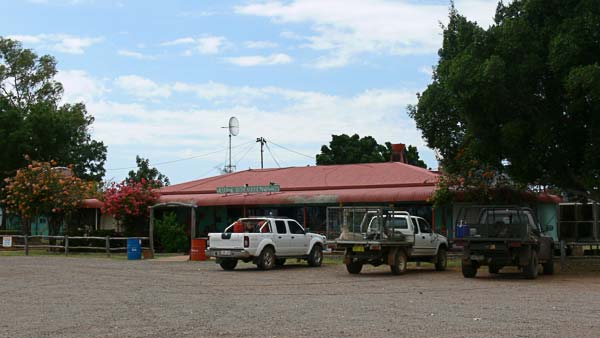
The final campsite, Camp 119 is located off the Savannah Way. This is as far as you can go following the Burke and Wills route to the Gulf of Carpentaria. Just as the explorers had many difficulties reaching the sea, so today’s travellers have no access here.
Better to go via Normanton, home of the Purple Pub and giant crocodile, and Karumba for your view of the sea.
FAQ
Anytime between April and October would be suitable for this trip. Remember that Victoria is cold over the winter months, but the Top End will be warm. Don’t be like Burke and visit the Top End during the wet season or central Australia from December to February.
4WD is recommended for all outback touring. But this trip is easy and there should be no need for low-range.
The roads across Victoria are mostly bitumen, with some unsealed. Avoid any Dry weather roads only, when they are wet.
In New South Wales main centre roads are sealed as are parts of the Silver City Highway. Otherwise most of the roads are unsealed and can be impassable after a lot of rain.
From South Australia and into Queensland road surfaces are mixed right to Normanton where roads are sealed to Karumba on the Gulf of Carpentaria.
Travellers should take due care on all road surfaces – sealed or unsealed. Many roads may be closed after heavy rain, so take note of all warning road signs.
The Burke and Wills route provides the opportunity to enjoy many different sights and adventures. To see how our adventure turned out see our video On the Track of Burke and Wills.
Dave Phoenix has written a book of his own journey walking the same route as Burke and Wills. Following Burke and Wills across Australia is available from Westprint Maps.
